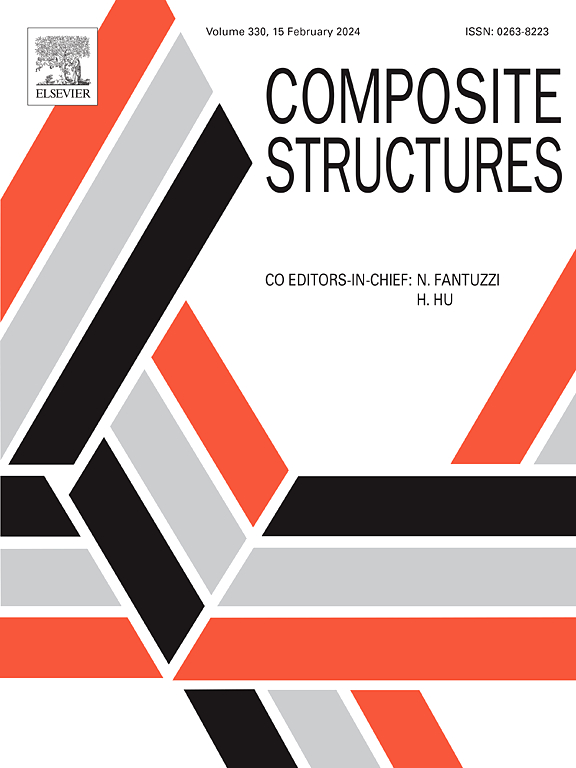采用应变率相关损伤模型评估复合材料机身支柱的耐撞性
IF 6.3
2区 材料科学
Q1 MATERIALS SCIENCE, COMPOSITES
引用次数: 0
摘要
数值测试对于复合材料机身的设计至关重要,因为复合材料机身有严格的耐撞性规定。然而,大多数机身撞击数值研究都没有考虑模拟中应变率的影响。为了准确预测复合材料机身结构的撞击行为,我们采用了一种考虑应变率相关性的损伤模型。该模型纳入了应变率效应,从而增强了现有的三维 Hashin 准则,并使用 ABAQUS/explicit 中的 VUMAT 子程序进行了数值计算。通过低速冲击问题对模型进行了验证,结果表明与之前文献中的数值分析相比,该模型与实验数据的相关性更好。研究重点是飞机机身下叶复合材料支柱受到的高能冲击。结果表明,新提出的模型能有效预测失效区域和失效模式,这表明该模型在解决典型撞击情况下的动态复合材料问题方面具有潜力。本文章由计算机程序翻译,如有差异,请以英文原文为准。
Crashworthiness assessment of a composite fuselage stanchion employing a strain rate dependent damage model
Numerical testing is crucial for the design of composite fuselages, which have strict crashworthiness regulations. However, the majority of studies on numerical fuselage impacts do not account for the effects of strain rate in simulations. A damage model considering strain rate dependence has been implemented to accurately predict the impact behaviour of a composite fuselage structure. This model enhances the existing three-dimensional Hashin criterion by incorporating strain rate effects and its implemented numerically using a VUMAT subroutine in ABAQUS/explicit. Validation of the model is done through a low-velocity impact problem, showing a better correlation with experimental data compared to previous numerical analyses available in the literature. The study focuses on high-energy impact on a composite stanchion in the lower lobe of an aircraft fuselage. Results demonstrate that the newly proposed model effectively predicts failure zones and modes, indicating its potential in addressing dynamic composite problems typical of impact scenarios.
求助全文
通过发布文献求助,成功后即可免费获取论文全文。
去求助
来源期刊

Composite Structures
工程技术-材料科学:复合
CiteScore
12.00
自引率
12.70%
发文量
1246
审稿时长
78 days
期刊介绍:
The past few decades have seen outstanding advances in the use of composite materials in structural applications. There can be little doubt that, within engineering circles, composites have revolutionised traditional design concepts and made possible an unparalleled range of new and exciting possibilities as viable materials for construction. Composite Structures, an International Journal, disseminates knowledge between users, manufacturers, designers and researchers involved in structures or structural components manufactured using composite materials.
The journal publishes papers which contribute to knowledge in the use of composite materials in engineering structures. Papers deal with design, research and development studies, experimental investigations, theoretical analysis and fabrication techniques relevant to the application of composites in load-bearing components for assemblies, ranging from individual components such as plates and shells to complete composite structures.
 求助内容:
求助内容: 应助结果提醒方式:
应助结果提醒方式:


